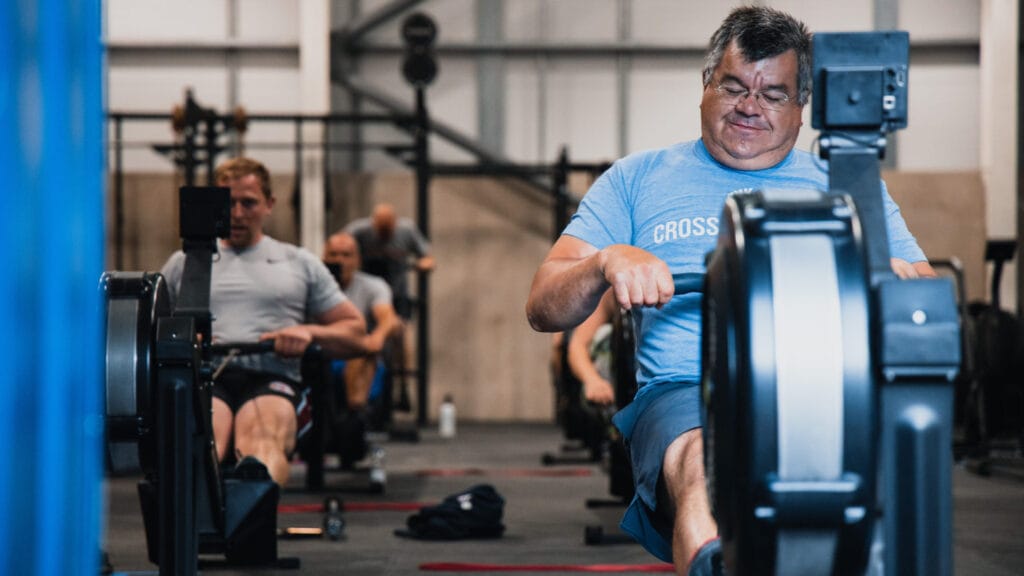What is an aerobic base?
Your aerobic capacity is an excellent measure of one’s cardiovascular fitness. Defined as maximal oxygen uptake it measures the ability of your cardio-respiratory system (heart & lungs) to take oxygen from the air to your working muscles where it can be metabolised into releasing energy through the process of respiration.
This is known as an aerobic base as it is the underpinning process that dictates all movements/actions you do. If a person cannot efficiently transfer oxygen from the outside to their working muscles, they’re going to find it impossible to run, jump, squat or snatch. Without oxygen your muscles don’t work!
Some of you may have heard of The Theoretical Hierarchy of Athletic Development. This is a simple pyramid that blueprints our ideal approach to health and fitness. To optimise development, each previous stage should be mastered to get the most out of your current stage.
Nutrition -> Metabolic Conditioning -> Gymnastics -> Weightlifting/Throwing -> Sport.
Now nutrition underpins everything that we do, but I’ll leave that for Rosie to explain!
A step up from nutrition is your metabolic conditioning. This is the stage where we develop our aerobic capacity and build that aerobic base. The reason why its so important to have this stage at the bottom of the pyramid is because, as before mentioned, without sufficient efficiency of our cardio-respiratory systems, other exercise is near impossible.
How do we train to improve our aerobic capacity?
Unfortunately, training to improve aerobic capacity can be long and tedious. It requires long efforts of what we call steady state exercise. An example of this would be a 40-minute bike/row or run/walk. It is known as steady state because the aim is to maintain a steady heart rate throughout (around 65-75% MAX HR)
What are the benefits of an increased aerobic base?
In addition to an increase in efficiency and calorie burn, the benefits of an improved aerobic base as we move up the pyramid are immense. The more efficient we are at supplying oxygen to working muscles will prevent us from fatiguing as quickly. This will mean that bodyweight/gymnastic exercises will become easier. Furthermore, if we’ve burnt more calories and therefore lost bodyweight, moving your body becomes much less challenging. Pull ups will be a breeze!
Further up the pyramid we move to weightlifting. There is a common misconception that an increase in aerobic fitness directly opposes strength gains. Whilst 100% of either causes this to be true, if used wisely and together, they can complement each other well. An increase in aerobic capacity also improves our rate of recovery. This means if you’re doing heavy sets of squats, you will be able to recover quicker between sets, and therefore be able to lift more weight which will then lead to an increase in strength. That increase in strength will then allow you to be more powerful in your conditioning sessions which will lead to an increase in aerobic capacity and so on and so on.
It cannot be overstated how important those long sessions at a steady heart rate are to our overall fitness!
Written by Coach Walt.

